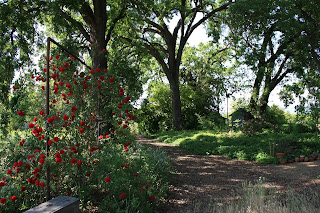
Kelseyville, until a couple of years ago, was a small town with a healthily tenanted Main Street. Very modest and compact, with a certain charm and cohesiveness, it was an old-fashioned Main Street of small, independently owned businesses. It was equipped with typical examples of American small town architecture. The look of the buildings told of their function. The bank edifice on a corner resembled bank buildings across the nation and there was no mistaking its identity. The same could be said of the Odd Fellows Hall, and the saloon. Simple false-fronted buildings, so typical of the American West gave a varied yet harmonious impression. One of these housed Kelseyville Lumber, which, as Kelseyville's most active business, served as a anchor for Main Street much as a Macy's or a Nordstrom might serve to anchor a suburban shopping mall. Kelseyville Lumber brought many customers to Main Street, which had a spill-over effect on the neighboring small businesses. Main Street was busy. It felt like a real town.

Main Street was laid out sensibly on a near perfect axis from its Western gateway, the old bridge across Kelsey Creek, to the summit of Mount Konocti at its Eastern end. These natural features of the land reinforced a sense of the rightness of Main Street's location. Kelseyville had a definable quality of place. It was the small commercial hub of the farming community of Big Valley.

Quickly, all this changed. The first blow to the integrity of our town occurred when another, bigger bridge was built across Kelsey Creek a half mile to the North, a sort of "bridge to nowhere" a characterless structure bearing a strong resemblance to a freeway ramp. The effect of the new bridge, which replaced a seasonal, country-style ford of the creek, was to undercut the importance of the venerable old bridge, which had until then so beautifully served as the entrance to town.
Actually, to dignify the new structure with the word "bridge" is a bit misleading. The thing is so engineered as to completely
eschew any quality of "bridgeness". It is simply a level stretch of freeway, which leaves one, on driving across, with no sense whatever of having crossed a body of water or anything else. Unlike the old bridge, the new bridge is a non-experience at best and more than a little depressing at worst.
In short order, after the completion of the new bridge, a beautiful stretch of adjacent open farmland, which had provided a natural perimeter to the downtown district, was bulldozed as the new location of Kelseyville Lumber. Soon the lumber yard had abandoned Main Street and relocated to a vastly over-sized tilt-up building surrounded by many acres of paved parking.
Suddenly Kelseyville's downtown boundary was blurred. The sense of a town situated within an agricultural valley was compromised. There was a new feeling that we could be just about anywhere in the new suburban America.

Citizens all across North America have fought tooth and nail against the invasion of Big Box Stores, usually owned by corporations such as WalMart. Sometimes these citizens have prevailed against this juggernaut and managed to save the quality of life in their downtowns. More often than not the Big Boxes have over-ridden the protests of local people. Town after town after town across the continent have been hollowed out and virtually destroyed in the process. Kelseyville Lumber, unlike WalMart, is a locally-owned, family-run business. But it is still a Big Box which turns its back on the sidewalks and foot traffic of Main Street and replaces it with vast stretches of pavement for parking. At the same time, it disregards the town's footprint and sprawls out over former open space, which gave context to the town.
One in four storefronts and commercial spaces on Main Street are now vacant and for rent.
As more small-scale pear growers tear out their orchards because of the tough economics of competition with large-scale corporate growers and international imports, the land is left vulnerable to thoughtless development. After the trees are removed, small pear saplings appear among the grasses. For sale signs go up.

One of many egregious examples of the destruction of our sight lines and sense of open space is the overblown new hacienda sitting pretentiously on its high mound of bulldozed earth and dominating the view for miles. Little by little, our open space is
being taken. There is no getting it back.


































